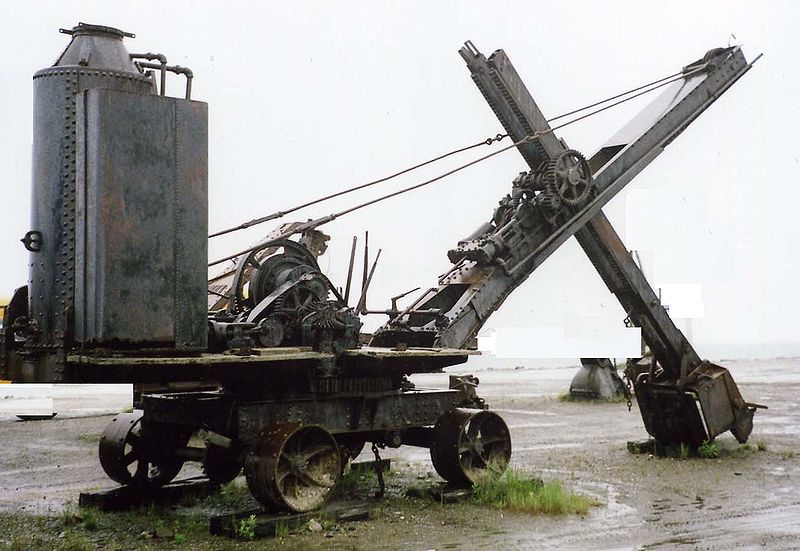

破壊的イノベーション
Christensen's concepts on
"Disruptive Technology" and his book
entitled as "Innovater's Dilemma,"
1997,2000.


破壊的イノ ベーション(disruptive innovation)とは、新 しい市場と価値(の ネットワーク)を造り出したイノベーションそのものが、既存 の市場と価値をシステムを破壊し、会社や製品、関連物(製造会社)などを生み出してしまうタイプのイノベーションである。破壊的イノベーションは、破壊的 技術によって支えられる。
破壊的技術 (disruptive techonology) とは、それを用いた商品が市場(マーケット)に参入した時点では、品質(パフォーマンス)も悪く人気のない商品が、その消費者へのニーズを満たす点におい ては他の対抗商品とは比較にならないほどの魅力ないしは刷新性(innovatiove)をもっているために、短期間の間に売り上げと品質を向上すること を通して市場を席巻するような潜在力をもった技術のことを言う。
破壊的技術の特徴は、1)単純、2)低価格、3)性 能が低い、4)収益 率が低い。そのため、そのため大企業は、それ(=破壊的技術)を採用し たいとは思わない。破 壊的技術の採用は、そのようなリスクをとっても市場に進出したい中小の企業あるいは、ベンチャー企業がそれを採用しようとする。破壊的技術を実装した商品 は、それ自体では時間をかけても品質は向上しない。商品化とその直後からの品質向上により市場のシェアを席巻するようになる、市場と潜在力をもった商品の ダイナミズムで「その破壊度や影響力」は決まる。破壊的技術の原則(クリステンセン 2001:301-302)は、次の4つである;1.企業 は顧客と投資家に資源を依存している。2.小規模な市場では大企業の成長ニーズを解決できない。3.存在しない市場は分析できない。4.組織の能力は無能 力の決定要因になる。5.技術の供給は市場の需要と等しいとはかぎらない。
破壊的イノベーションと は、新しい市場と価値(の ネットワーク)を造り出したイノベーションそのものが、既存 の市場と価値をシステムを破壊し、会社や製品、関連物(製造会社)などを生み出してしまうタイプのイノベーションである。ハーバート・ビジネススクールの クレイトン・マグレビイ・クリステンセン(Clayton Magleby Christensen, 1952- )が『イノベーターのジレンマ(The Innovator's Dilemma)』(1997)などで主張し、膾炙した用語である。シュ ンペーターのイノベーションの定義(5つの要素)は、今から みればスタティック(静態的)であり、イノベーションの帰結が(市場が実質的に飽和状態にある現在)何をもたらすのかを「予言」した意味で、すばらしく、 また新しい概念であることは間違いない。
ただし、この著作の邦訳には留意が必要だ。「イノ ベーター」がイノベーションに化け、「破壊的技術」が破壊的イノベーションに化ける(→「破壊的技術」は「確立された技術」と対比的になるのでイノベー ションと技術との論理的峻別がややこしくなる)。これでは日本のMBAは日本語教科書で授業やってはいけないことになるからだ。
その後の著作のなかで、クリステンセンは、破壊の意
味を次のように説く:「破壊とは、それまで決められた不便な場所にいる金のかかる専
門家にしかできなかったことを、技能や資力のない人たちにもできるようにすることで、産業に大きな新しい成長をもたらす力である」(クリス
テンセン 2008:iv)
"Disruptive innovation is a term in the field of business administration which refers to an innovation that creates a new market and value network and eventually disrupts an existing market and value network, displacing established market leading firms, products, and alliances." - Disruptive innovation, by Wiki
Criticism:
"One criticism of the book by Ben Thompson[4] is that the theory
applies best to businesses with business customers. Thompson says that
consumers are not as rational and single-minded as business customers,
and hence are less susceptible to disruption. Thompson points to the
iPhone as a consumer product that is not easily disrupted by a low-end
disruption; Christensen maintains that the iPhone and Apple are good
candidates for disruption.[5]" - The
Innovator's Dilemma
by Wiki: 4=Thompson, Ben. "What Clayton Christensen Got Wrong".
Stratechery. Retrieved 1 November 2014. 5= Blodget, Henry. "Harvard
Management Legend Clay Christensen Defends His 'Disruption' Theory,
Explains The Only Way Apple Can Win". Business Insider. Retrieved 1
November 2014.
●破壊的技術の原則(クリステンセン 2001:301-302)
1.企業 は顧客と投資家に資源を依存している
2.小規 模な市場では大企業の成長ニーズを解決できない
3.存在 しない市場は分析できない
4.組織 の能力は無能力の決定要因になる
5.技術の供給は市場の需要と等しいとはかぎらない
● 破壊的技術の特徴
1)単純、2)低価格、3)性能が低い、4)収益 率が低い
そのため大企業は、それ(=破壊的技術)を採用し
たいとは思わない。
+++
出典:同じくウィキによるが、英文版では出典が示さ
れていないと注がついている。THE INNOVATOR'S DILEMMA.だとは思われる。
●The innovator's dilemmaの章立て
Part One: Why Great companies can fail
1. How Can Great Firms Fail? Insights from the Hard Disk Drive Industry
2. Value Networks and the Impetus to Innovate
3. Disruptive Technological Change in the Mechanical Excavator Industry
4. What Goes Up, Can't Go Down
Part Two Managinig Disruptive Technological Change
5. Give
Responsibility for Disruptive Technologies to Organizations Whose
Customers Need Them
6. Match the Size of the Organization to the Size of the Market
7. Discovering New and Emerging Markets
8. How to Appraise Your Organization's Capabilities and Disabilities
9. Performance Provided, Market Demand, and the Product Life Cycle
10. Managing Disruptive Technological Change: A Case Study
11 The Dilemmas of Innovation: A Summary The Innovator's Dilemma Book Group Guide
Index
クリステンセンによると、イノベーターのジレンマの 解とは「1)如才なくマネジメントし、2)懸命に働き、3)愚かな過ちをおかなさないようにすること」である(クリステンセン 2001:293)。
破壊的イノベーションに直面したときにも、1)上流 市場で成功を導いてきた能力、2)組織構造、3)意思決定プロセスを捨てる必要はないという。
| ●First, the pace of progress
that markets demand or can absorb may be
different from the progress offered by technology. |
|
| ●●Second, managing innovation mirrors the resource allocation process: Innovation proposals that get the funding and manpower they require may succeed; those given lower priority, whether formally or de facto, will starve for lack of resources and have little chance of success. | |
| ●●●Third, just as there is a resource allocation side to every innovation problem, matching the market to the technology is another. | |
| ●●●●Fourth, the capabilities of most organizations are far more specialized and context-specific than most managers are inclined to believe | |
| ●●●●●Fifth, in many instances, the information required to make large and decisive investments in the face of disruptive technology simply does not exist. | |
| ●●●●●●Sixth, it is not wise to adopt a blanket technology strategy to be always a leader or always a follower. | |
| ●●●●●●●Seventh, and last, the
research summarized in this book suggests that there are powerful
barriers to entry and mobility that differ significantly from the types
defined and historically focused on by economists. |
● 教育という「商品」にも破壊的技術の実装は可能
である→「学位なんてどうでもいい!私たちは学び
たいのだ!」
リンク
文献
その他の情報
Copyleft, CC, Mitzub'ixi Quq Chi'j, 1996-2099
☆
 ☆
☆